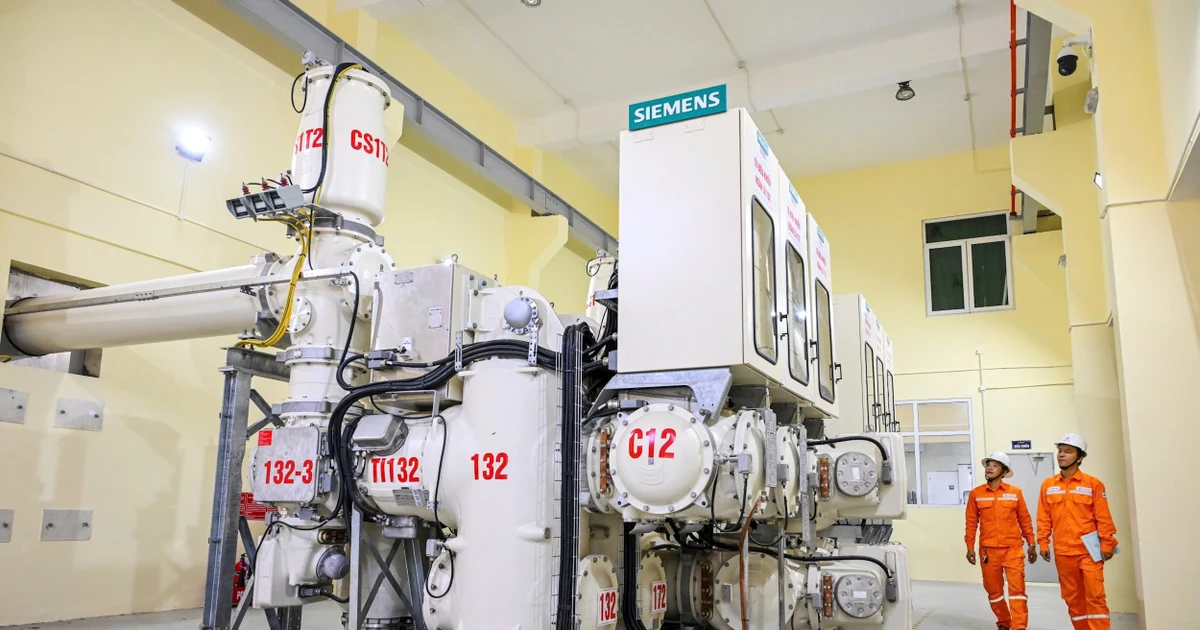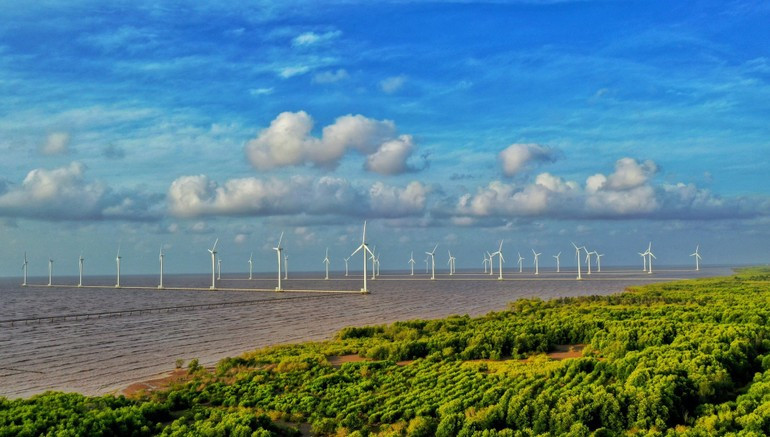Trilateral cooperation in advancing core values
From a system that once operated primarily on imported equipment, Viet Nam’s electricity sector is now entering a period of strong growth, striving to master core technologies so as not to fall behind in the global energy transition.

Institutional framework for core technologies in the electricity sector
Guided by Resolution 57-NQ/TW on breakthroughs in developing science, technology, innovation and national digital transformation, on June 27, 2025, the National Assembly adopted the Law on Science, Technology and Innovation. One of the strategic directions for scientific, technological, and innovation development is: focusing resources on technological fields with breakthrough potential, strategic technologies built upon global technological trends, internal capacity and national competitive advantages.
According to the roadmap announced by the Ministry of Science and Technology, in 2025, Viet Nam will master three strategic technological products. By 2027, the goal is to expand to at least 20 products and add 25 more by 2035. In the longer term, Viet Nam aims to develop strategic technological industries contributing 15–20% of GDP.
Strategic technologies are seen as the overarching “umbrella” under which the State focuses resources, designs policies and implements long-term development programmes. This process moves from mastering products, to mastering design, and ultimately mastering core technology. At present, domestically innovative application of core technologies (such as smart grids, energy storage, nuclear power or green hydrogen) to address national issues must be prioritised.
Electric energy is the foundational infrastructure of all socio-economic activities; therefore, strategic technologies for the electricity sector hold vital importance. The rapid addition of renewable energy sources poses significant operational challenges to the traditional grid. Hence, the country cannot rely solely on expanding supply while overlooking smarter energy use. This is precisely when core technologies demonstrate their value.
With new generations of technology, nuclear safety standards are significantly elevated. Nuclear power may become a key long-term electricity source. Smart-grid solutions help coordinate and automate the grid. Battery energy storage systems (BESS) store electricity and release it when needed. The application of artificial intelligence (AI) and Big Data also assists with demand forecasting and grid optimisation.

Real-world barriers
Viet Nam has begun to adopt and apply multiple layers of new technology. However, most solutions, equipment and foundational software still rely on foreign technology. “To realise the goal of developing strategic technologies, we must simultaneously address institutional, infrastructural, technological and human-resource barriers,” emphasised Dr Nguyen Quan, former Minister of Science and Technology and President of the Viet Nam Automation Association.
For example, energy storage technology, considered the “key” to renewable energy, still lacks a clear legal framework in Viet Nam. Should it be considered an independent power source or simply a system for converting, storing, and returning electricity? In addition, practical requirements call for establishing a clear and effective pricing mechanism for electricity purchasing and sales.
Viet Nam’s long-term vision to 2050 is to achieve net-zero emissions, raise the share of renewable energy in electricity generation to 74–75%, develop nuclear power with a total capacity of 14 GW, and complete hydrogen infrastructure capable of producing 10–20 million tonnes per year. These figures reflect immense ambition and require removing numerous institutional, policy and technological bottlenecks.
Dr Nguyen Anh Tuan, Standing Member of the Executive Committee of the Viet Nam Energy Association, speaking at the Forum on Energy Technology in the New Era.
Moreover, Viet Nam currently allocates only around 0.4% of GDP to energy research and development (R&D — far below the 2% target for 2030, let alone regional comparisons. The number of R&D organisations in the energy sector remains small, primarily consisting of a few research institutes under the Ministry of Industry and Trade and technical universities. R&D centres for wind turbines, storage systems, solar panels and green hydrogen remain limited in both capacity and scale.
International experience indicates that the electricity sector must grow at nearly twice the rate of national GDP. With Viet Nam pursuing double-digit economic growth, the electricity sector must expand even faster to meet demand. The true pressure lies in ensuring operational quality, reliability, and sustainability. This requires a smarter, more flexible electricity management system grounded in core technologies mastered by Vietnamese engineers at key stages.
Fostering the “Three-Party” innovation ecosystem
At the Forum on the Future of National Science-Technology, Innovation and Digital Transformation, Deputy Minister of Science and Technology Hoang Minh stressed: to address real-world challenges, the State will assign major enterprises — regardless of ownership — to develop strategic products, strategic industries and strategic technologies.
To gradually research, develop and master strategic technologies, experts unanimously agree that the “key” lies in mechanisms that promote a trilateral collaboration ecosystem: the State acts as architect through policies, direction, investment in research infrastructure and public procurement; research institutes and universities generate new knowledge, train human resources and develop foundational technologies; enterprises serve as market drivers, possessing financial resources and organising production.
According to Dr Nguyen Quan, to build effective policies, Viet Nam must balance learning from international experience with promoting domestic capabilities. Viet Nam should proactively consult leading energy regulators and scientists in advanced countries — “chief architects” of major energy projects. Domestically, policy development must incorporate comprehensive input from scientists, experts and enterprises. Determining the “problem statement” for strategic technological products has become a decisive task, ensuring feasibility, vision and alignment with practical conditions in the Vietnamese grid.
With a long-term vision, Viet Nam needs to implement several key solutions simultaneously.
First, priority should be given to upgrading the electricity grid, encouraging large-scale energy storage development, and improving renewable-energy forecasting.
Second, strengthen domestic research, technology development and supply chains, encouraging close cooperation between research institutes, universities and enterprises.
Finally, develop high-quality human resources through training programmes closely linking theory with practice.
From Resolution 57-NQ/TW on breakthroughs in science, technology, innovation, and digital transformation, Resolution 68-NQ/TW on private-sector development, and the Law on Science, Technology and Innovation, these measures have helped create a new playing field in which private enterprises, universities, and research institutes not only participate, but also lead the race to master core technologies in the electricity sector.
To build sustainable cooperation between universities, research institutes, and enterprises, State support and resources are essential, along with harmonised sharing between the State budget and matching capital from enterprises for R&D projects. A relevant example is France’s INES 2S solar-energy integration project, funded 50% by the French Atomic and Renewable Energy Agency (CEA) and 50% by industrial partners.








